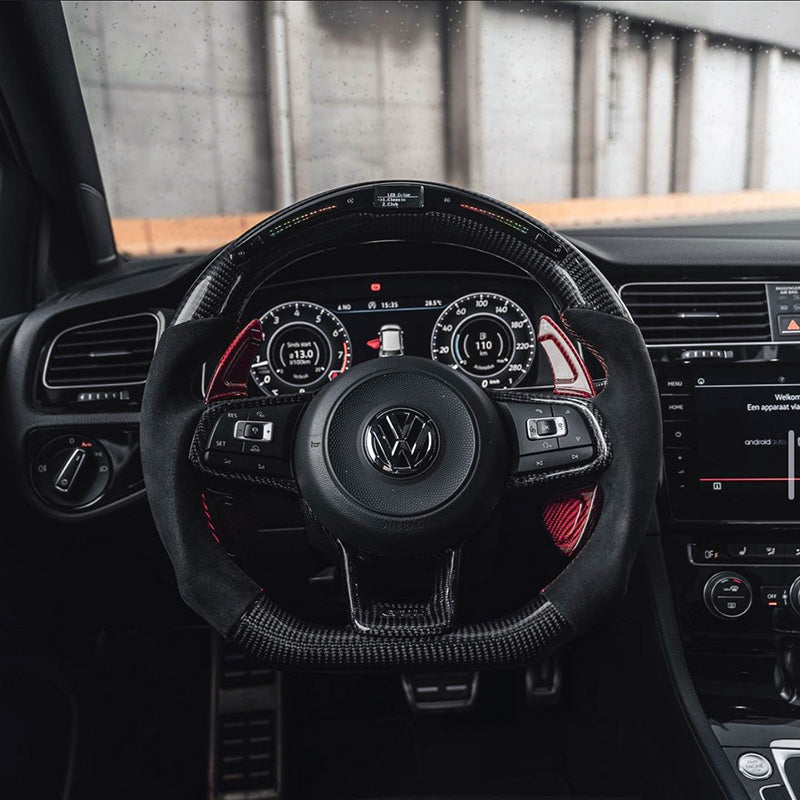Today’s automatic transmission technology is better than ever. The sophisticated setup of so-called “paddle shifters” has become increasingly prevalent among car owners. Probably many drivers have heard of paddle shifters, but very few really know how they work. In many drivers’ eyes, paddle shifters are merely car accessories. But is this true? What are they for?

Paddle shifters were first adopted in racing cars, especially Formular One cars. To minimize its weight and improve its pneumatic performance, a Formular One car has a minimal cockpit, which is not even sufficient to allow it to be equipped with a traditional gear stick. For this reason, paddle shifters together with multi-function steering wheels have been widely adopted in racing cars. Except acceleration and braking, the operation of a racing car is all done using the paddle shifters and multi-function steering wheel, which allow a driver to control racing cars without the need to remove one hand from the steering wheel. This design enables racing car drivers to focus more on the racing circuit and drive more decisively. It is thought that the development of road cars is often inspired by racing car technologies. As a result of the advancements of automatic transmission technologies, paddle shifters were soon introduced in mass-produced road cars.

Paddle shifters are now used in different types of middle- to high-class vehicles and are becoming more and more popular with car owners. In fact, paddle shifters are particularly useful in close overtaking and changing lanes.
For many car owners, paddle shifters serve no purpose other than making their cars look more luxurious. When driving in the city, drivers need to overtake very frequently. Paddle shifters are, in fact, vital for close overtaking and changing lanes.
When a driver is about to overtake, he does not need to switch over to manual mode before shifting down a gear and then step on the accelerator. What he needs to do is pull the paddle accordingly which enables him to shift the transmission and accelerate almost simultaneously. After overtaking, the driver may pull the paddle again to shift up swiftly. This mechanism helps save fuel and keep the engine quiet.
Most new drivers hold the steering wheel carefully at the “3 and 9” position. Unfortunately, after years of driving, many of them drive with one hand only, which is not only a bad habit but also a dangerous practice. Using paddle shifters properly and constantly will help drivers get into the habit of holding the steering wheel with both hands.

The most common type of paddle shifters is designed with the left paddle for downshifts and right paddle for upshifts. This is how to operate them – when the car is idling or in motion, shift the gears to M or S mode (some car models allow manual transmission when it is in D mode) and then “pull” either paddle with your fingers to shift down or shift up a gear. After switching over to manual mode, the car’s computer will display the details about the operation of the transmission.
The other type of paddle shifters is designed with both paddles allowing downshifts and upshifts, enabling drivers to shift the gears more flexibly and conveniently and therefore better control their cars. This is how to operate them – after switching over to manual mode, operate the paddles with your fingers. Push the paddle to upshift or pull it to downshift. Try not to shift more than one gear at a time.
However, paddle shifters are not suitable for every driver or every car. For example:
- Those drivers who do not have a good understanding of the relationship between gears, power outputs and car speeds are not capable of selecting the right gears and can only rely on automatic transmission when they are driving. They are recommended to drive manual transmission cars in order to familiarize themselves with the operation of manual transmission before they start to use paddle shifters.
- Those cars which have excellent drivetrains perform very well without the use of manual transmission. The benefits of paddle shifters do not seem to be significant.
- Those cars in which transmission is not very responsive to paddle shifters do not benefit from the functions of paddle shifters. Some vehicles like family cars are designed for comfort rather than powerful performance. The response of their transmission is usually slower which does not fit the purpose of paddle shifters.
When deciding whether or not to use paddle shifters, a driver has to consider the car model, requirements and expected performance of a car.

